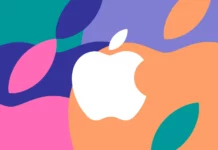In a new post on the Windows Blog, Microsoft says it has “reached an important milestone” in improving the speed of the Edge user interface. Microsoft‘s browser now takes less than 300 milliseconds to start rendering the first parts of a website to users, whether it’s text, images, or parts of the user interface.
This metric, known as First Contentful Paint (FCP), was introduced by Google in its Chrome browser in 2017, and according to Microsoft, “industry research shows that waiting longer than 300-400 ms for initial content can have a significant impact on user satisfaction.” However, while loading the first elements of a site in less than 300 milliseconds may make the browser feel fast and responsive, FCP is not an indicator of how long it will take for the site to fully load.
The updates could convince some users to switch to Edge, which currently holds less than five percent of the global browser market, compared to Chrome’s 68 percent. Microsoft may also soon face new competition from companies such as OpenAI, which are also considering introducing their own browsers in addition to existing AI web search tools.
The improvements follow similar performance gains that Microsoft has reported in previous blog posts, made possible by the company’s ongoing efforts to migrate the Edge user interface to a faster WebUI 2.0 architecture that “minimizes the size of our code packages and the amount of JavaScript code executed during UI initialization.”
In February last year, Microsoft said that loading, history, and creating new private tabs in the Edge browser were about 40 percent faster on average. The company says it has since delivered similar performance improvements to 13 additional browser features, including more flexible settings, a split screen that now delivers “near-instant navigation and lower load times,” and smoother playback of the artificial intelligence-powered Read Aloud feature, which is focused on accessibility.
In the coming months, Microsoft plans to roll out additional Edge performance improvements for features such as print previews and extensions.









